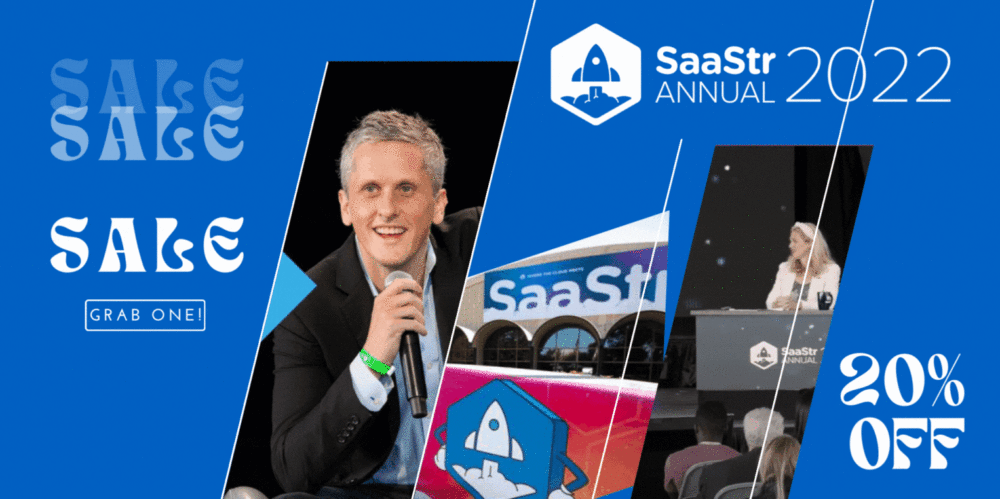How do you build a sales organization from scratch? How do you go from $0 to $1M ARR and beyond? What about moving from founder-led sales to building a sales team and scaling your revenue growth?
Demodesk’s CEO, Veronika Riederle, and VP of Revenue, Lauren Wright, answer the most pertinent questions on scaling a SaaS start-up as they take us through lessons learned from the three stages of growth.
1. Product-Market Fit
Going from $0 to $1M ARR is the first baby step for any SaaS startup. Getting the first ten customers is like shooting in the dark.
“Hitting $1M ARR is the benchmark to figure out if you have a product-market fit.” – Veronika Riederle, CEO @Demodesk
How to get the first ten customers
- Use your personal network. Reach out to friends and family. Leverage those in your network connected to a tech or SaaS company and get introductions.
- Users > customers. Focus on getting your first ten users and retaining them. They aren’t paying yet, so they are not yet customers. Once your product is refined and ready to go to market, inform your users they will now need to pay to continue using your services. Voila! You’ve got your first customers.
- 24×7 founder support. Whether you’re across the country or in a different time zone, you need to be available for customers to address their queries expediently and professionally. The customer experience cannot be compromised just because you’re hustling.

2. Build a predictable sales process
Before you hire your first sales reps, you need to have a justifiable reason to do so. It’s arguably harder to acquire new customers once you go beyond friends and family. You’re trying to convince people who have not heard about your brand before and don’t have any previous connection with you.
Getting to a target of 50 customers will justify your first round of hiring. Here are a few strategies that Demodesk used during this growth stage.
- Scraping LinkedIn. Demodesk set up a fake profile on LinkedIn. A bot called Elena reached out to potential customers and scraped LinkedIn for profiles that fit the company’s target personas. This approach landed Demodesk their first 25 customers.
- Hacking Product Hunt. Product Hunt is a platform for launching new products. The goal of any business is to achieve the “No. 1 product of the day,” which requires a lot of upvotes. Demodesk reached out to companies with a successful Product Hunt launch, asked them what they did, and followed their guidance. They then went one step further—they created a bot that reached out to its Facebook and LinkedIn networks, got them to sign up on Product Hunt two weeks before the launch, and asked them to upvote once they launched.
- Cold calling. Be prepared to do whatever it takes to reach your number target so that it makes sense to move to the next step and hire a sales team. Demodesk supplemented its efforts by cold calling to reach its target of 50 customers.
Once you’ve got your first 50 customers, you’ve earned yourself the right to hire.
One key thing to remember when hiring is that amazing talent is not always the right talent for your company. Don’t get logo allure, especially in the early stages of your organization.
Second, know and accept that the failure rate is high. One in four sales representatives will probably fail. Tapping into your network is a great way to hire people who can hustle and build your organization with you from the ground up.
“Hire people passionate about building something with you who will subscribe to your organizational culture.” – Lauren Wright, VP Revenue @Demodesk

3. Building a scalable, repeatable sales organization
At this exciting stage, your company is moving beyond founder-led growth, expanding into multiple countries, and launching new products. Now is the time to assess what your expanding customer base looks like. You’ll likely find a deviation from what you set out to solve and what your product is actually solving for customers.
“It’s easy to get distracted by the blue ocean of opportunity, but it’s crucial to define your perfect customer.” – Lauren Wright, VP Revenue @Demodesk
Begin segmenting your customers. Identify which customers are most likely to renew their subscription to your product and are growing with you. Then, determine who your next 200 customers will be—those whose needs are aligned with the problem you’re solving. They are the ones to go after for creating a strong and stable customer base.
Ruthlessly define and refine your ideal customer profile. Map out the buyer journey and what it takes to convert them into a paying customer and then a committed customer. As you scale into international markets, your ideal customer profile and the repeatable process will continue to evolve. Regularly revisit your ideal customer profile to continue to understand your growing and evolving audience.
Key Takeaways
Getting the first fast 50-100 customers should be your priority in the first two stages of revenue growth. It’s time to hire a sales team when you acquire customers beyond your personal network. As you scale, ensure that you hire right and get your first sales reps to a state of productivity.
Finally, while you may have a predictable process that gets customers through the funnel, your process may be predictably inefficient. Ensure you’re running a business where your unit revenue economics make sense to scale your revenue organization.
The post Navigating the Rocky Road from Founder-Led Sales to The First Dozen Sales Professionals with Demodesk CEO Veronika Riederle and VP Revenue Lauren Wright (Pod 588 + Video) appeared first on SaaStr.
via https://www.aiupnow.com
Amanda Beaty, Khareem Sudlow


